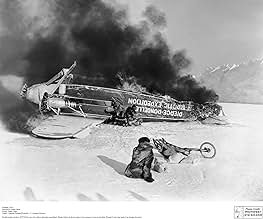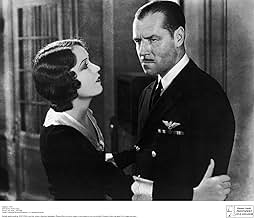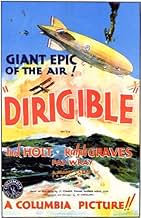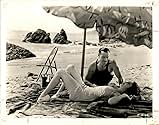अपनी भाषा में प्लॉट जोड़ेंJack Bradon is tasked to reach the South Pole with a dirigible.Jack Bradon is tasked to reach the South Pole with a dirigible.Jack Bradon is tasked to reach the South Pole with a dirigible.
- पुरस्कार
- कुल 2 जीत
Emmett Corrigan
- Rear Adm. John S. Martin
- (as Emmet Corrigan)
Richard Alexander
- Radio Operator
- (बिना क्रेडिट के)
Bess Flowers
- Party Guest
- (बिना क्रेडिट के)
George 'Gabby' Hayes
- Parade Official
- (बिना क्रेडिट के)
Edward Hearn
- Admiral's Aide
- (बिना क्रेडिट के)
Selmer Jackson
- Lt. Rowland
- (बिना क्रेडिट के)
Eddie Kane
- Lakehurst Radio Announcer
- (बिना क्रेडिट के)
Kenneth MacDonald
- Lt. Fogarty
- (बिना क्रेडिट के)
Adrian Morris
- Dirigible 'Los Angeles' Crewman
- (बिना क्रेडिट के)
William H. O'Brien
- Sailor
- (बिना क्रेडिट के)
Broderick O'Farrell
- Doctor
- (बिना क्रेडिट के)
फ़ीचर्ड समीक्षाएं
This is a must-see film for people like me. I am a history teacher and love aviation and especially dirigibles. Despite how amazingly large and spectacular these airships were, very few films were ever made about them. Here, fortunately, is a homage to America's rather ill-fated dirigible service operated by the US Navy. Additionally, fans of naval aviation will also be thrilled by the airplanes and aircraft carrier (USS Lexington) featured in the film. However, to those out there that could care less about these things, there is little that will interest you about the film--particularly since the romance in the film seems "tacked on" and confusing.
But first, a bit of background. In the 1930s, the Navy purchased some of these airships from the Germans and also made some their own--all of which eventually crashed! Some of this was due to pilot error and some of this was due to the weaknesses of the American designs. So, since the use of these enormous gas-bags was limited to a very short period of time, there just isn't all that much information about them. In hindsight, they were a very cool idea that was already impractical and outdated--at least as far as military use goes. One of the airships in the film (the Pensacola) did not exist, while the Los Angeles was an actual airship.
So back to the film. The aerial sequences are generally quite good and a lot of actual footage was rather seamlessly integrated into the film--in particular, the amazing Aviation Day sequence where two dirigibles and many non-rigid airships fill the screen. Also, while a bit ponderous, the Antarctic scenes were well made and interesting. BUT, the gratuitous romance just got in the way of the film and made no sense. Because Fay Wray loved her husband so much, she wanted to leave him? And then, when he's nearly killed, she calls off her plans to run away with his ex-best friend and returns! It's convoluted and senseless and a major distraction.
But first, a bit of background. In the 1930s, the Navy purchased some of these airships from the Germans and also made some their own--all of which eventually crashed! Some of this was due to pilot error and some of this was due to the weaknesses of the American designs. So, since the use of these enormous gas-bags was limited to a very short period of time, there just isn't all that much information about them. In hindsight, they were a very cool idea that was already impractical and outdated--at least as far as military use goes. One of the airships in the film (the Pensacola) did not exist, while the Los Angeles was an actual airship.
So back to the film. The aerial sequences are generally quite good and a lot of actual footage was rather seamlessly integrated into the film--in particular, the amazing Aviation Day sequence where two dirigibles and many non-rigid airships fill the screen. Also, while a bit ponderous, the Antarctic scenes were well made and interesting. BUT, the gratuitous romance just got in the way of the film and made no sense. Because Fay Wray loved her husband so much, she wanted to leave him? And then, when he's nearly killed, she calls off her plans to run away with his ex-best friend and returns! It's convoluted and senseless and a major distraction.
The "7" is strictly for the amazing aerial scenes involving airships or dirigibles (like the Hindenberg that crashed at Lakehurst, N.J.). In fact, all of the aviation moments are skillfully photographed for dramatic effect, especially the fierce electrical storm that destroys one of the dirigibles by pulling it apart in mid-flight.
The romance on the ground is far less convincing than the action sequences involving pilots flying to the South Pole. FAY WRAY is the femme lead, hopelessly in love with hubby RALPH GRAVES and begging his best friend JACK HOLT not to use him on his expedition to the South Pole. She's sick of staying behind and worrying about him and his grandstanding exploits. Unfortunately, none of the domestic scenes between Graves and Wray bear any semblance to reality--her weeping gets pretty tiresome before the plot is resolved.
But FAY WRAY was unquestionably a beautiful woman and director Frank Capra gives her plenty of close-ups. Her role is not particularly well written and she has trouble being anything more than a decorative ploy. RALPH GRAVES is not totally convincing as a reckless pilot. There's an awkwardness about his acting that is somewhat disconcerting here. JACK HOLT handles his role with authority and good screen presence.
A fascinating look at early aviation exploits using dirigibles and balloons when they were seriously considered to be the modern methods of aviation. Well worth watching.
The romance on the ground is far less convincing than the action sequences involving pilots flying to the South Pole. FAY WRAY is the femme lead, hopelessly in love with hubby RALPH GRAVES and begging his best friend JACK HOLT not to use him on his expedition to the South Pole. She's sick of staying behind and worrying about him and his grandstanding exploits. Unfortunately, none of the domestic scenes between Graves and Wray bear any semblance to reality--her weeping gets pretty tiresome before the plot is resolved.
But FAY WRAY was unquestionably a beautiful woman and director Frank Capra gives her plenty of close-ups. Her role is not particularly well written and she has trouble being anything more than a decorative ploy. RALPH GRAVES is not totally convincing as a reckless pilot. There's an awkwardness about his acting that is somewhat disconcerting here. JACK HOLT handles his role with authority and good screen presence.
A fascinating look at early aviation exploits using dirigibles and balloons when they were seriously considered to be the modern methods of aviation. Well worth watching.
Lakehurst, the setting for much of this film was the epicenter of American ballooning and dirigibles, before the second world war and through it as well. A recent book, _They sailed the skies : U.S. Navy balloons and the airship program_ led me to this film, since it represents an easy way to get a look at some of the men and machines in action. Frank "Spig" Wead is the writer and Frank Capra directs. Wead of course was a flyer himself and only turned to writing after a crash broke his neck, crippling him. See WINGS OF EAGLES by John Ford for a dramatization of his life. The early sound era is not known for the sleekness of it's screen story-telling, but if you have interest in the history of zeppelins, or pre-WW2 aviaton, this film is worth watching.
Return to the heady days of the 1920s, when the strategic bombers of World War I were still seen as a viable alternative to the rickety airplanes of the day. While the acting is wooden and stereotypical (brave fly boy, conservative large "ship" commander, frail stay at home wife), just seeing the footage of the long-gone rigid airships is worth the tariff.
The best shot is near the beginning, when the camera pans upward, past round naval observation balloons, surprisingly modern non-rigid 'blimps' flying in formation, and then (above them all) the massive (larger by a factor of five or more) dirigible of the title.
Scenes of the real dirigible flying, landing, dropping naval "parachute men", and hooking up to the mooring mast are also worth the time.
Not so much the rest of the movie. Period special effects do not hold up well under modern scrutiny, and the silly pining away of Fay Wray really gets in the way.
(Odd too is the fact that the Review Board passed on a plot line involving an obviously cheating on her husband woman, including a racy scene at the beach where the two have been sharing an afternoon swimming, barely clad by 1930s standards). Perhaps this was during the Hays to Breen transition period, and it slipped under the radar.)
Note that the poor USS Pensacola (a mythical Navy airship; there was a cruiser by that name but never an aircraft) doesn't catch fire, despite the dramatic breakup of the structure. US airship were filled with helium (due to the almost monopolistic corner of the world's supply of helium by the US), and although they suffered through a series of dramatic crashes (Shenandoah, Akron, Macon), none of them caught fire a la the Hindenburg.
Buy it in the newly released DVD for the flying, and try to ignore the rest. (Oh, and Fay Wray looks far better as a brunette than she ever did as a blonde.)
The best shot is near the beginning, when the camera pans upward, past round naval observation balloons, surprisingly modern non-rigid 'blimps' flying in formation, and then (above them all) the massive (larger by a factor of five or more) dirigible of the title.
Scenes of the real dirigible flying, landing, dropping naval "parachute men", and hooking up to the mooring mast are also worth the time.
Not so much the rest of the movie. Period special effects do not hold up well under modern scrutiny, and the silly pining away of Fay Wray really gets in the way.
(Odd too is the fact that the Review Board passed on a plot line involving an obviously cheating on her husband woman, including a racy scene at the beach where the two have been sharing an afternoon swimming, barely clad by 1930s standards). Perhaps this was during the Hays to Breen transition period, and it slipped under the radar.)
Note that the poor USS Pensacola (a mythical Navy airship; there was a cruiser by that name but never an aircraft) doesn't catch fire, despite the dramatic breakup of the structure. US airship were filled with helium (due to the almost monopolistic corner of the world's supply of helium by the US), and although they suffered through a series of dramatic crashes (Shenandoah, Akron, Macon), none of them caught fire a la the Hindenburg.
Buy it in the newly released DVD for the flying, and try to ignore the rest. (Oh, and Fay Wray looks far better as a brunette than she ever did as a blonde.)
Okay, I know, they are not blimps. They are Zeppelins. "Airships" was the preferred term by the U.S. Navy.
This is a very exciting action film for 1931. Apparently made with quite a high budget. I saw model shots, large sound stages filling in for Antartica, thousands of extras, real airships, and a gigantic ticker tape parade shot on location in New York City. All of these things cost much money. The U.S. Navy's use of airships was so brief that this film also marks one of the few stories about this chapter in our military history.
This film proves that Capra was also adept at high intensity action directing (for 1931) as well his usual character-driven morality plays that he became so well-known for.
The one thing that is the most striking to me about (some) early talking pictures, of which this is one, is that they have hardly any music score. This is true here, and only adds to the isolated feeling in the scenes of the doomed expedition struggling to escape from the frozen tundra. Plenty of sound effects in the scenes of the doomed Pensacola going down, but no music. In fact, the film even uses a few silent film style narration cards.
Anyway, in spite of this film dating from 1931, it has aged really well and doesn't seem too dated at all. A nice action/adventure film. The print they showed on TCM on television was in very good shape, even the sound was strong in most places. Yes, the love story seemed tacked on, but there are thousands of films in the history of Hollywood that could have survived artistically with their romantic subplots (probably inserted at the insistence of cigar-chewing studio bosses to get "the female market") jettisoned. In any case, this movie is quite entertaining and Worth checking out.
This is a very exciting action film for 1931. Apparently made with quite a high budget. I saw model shots, large sound stages filling in for Antartica, thousands of extras, real airships, and a gigantic ticker tape parade shot on location in New York City. All of these things cost much money. The U.S. Navy's use of airships was so brief that this film also marks one of the few stories about this chapter in our military history.
This film proves that Capra was also adept at high intensity action directing (for 1931) as well his usual character-driven morality plays that he became so well-known for.
The one thing that is the most striking to me about (some) early talking pictures, of which this is one, is that they have hardly any music score. This is true here, and only adds to the isolated feeling in the scenes of the doomed expedition struggling to escape from the frozen tundra. Plenty of sound effects in the scenes of the doomed Pensacola going down, but no music. In fact, the film even uses a few silent film style narration cards.
Anyway, in spite of this film dating from 1931, it has aged really well and doesn't seem too dated at all. A nice action/adventure film. The print they showed on TCM on television was in very good shape, even the sound was strong in most places. Yes, the love story seemed tacked on, but there are thousands of films in the history of Hollywood that could have survived artistically with their romantic subplots (probably inserted at the insistence of cigar-chewing studio bosses to get "the female market") jettisoned. In any case, this movie is quite entertaining and Worth checking out.
क्या आपको पता है
- ट्रिवियाThe production was shot during a California heat wave. To form vapor on the breath and give the impression that the pilots were in the Antarctic, the performers were given lumps of 'dry ice' (frozen carbon dioxide) in metal boxes to put in their mouths. Hobart Bosworth found the box cumbersome and simply put the ice in his mouth. He lost his tongue and most of his lower jaw.
- गूफ़The name of this Dirigible was the USS Pensacola but there was already a USN heavy cruiser of the same name that was in service since 1928 when this movie was made. The Navy does not assign duplicate names to ships/air ships in service at the same time.
- कनेक्शनFeatured in Frank Capra's American Dream (1997)
- साउंडट्रैकAnchors Aweigh
(1906) (uncredited)
Music by Charles A. Zimmerman
Lyrics by Alfred Hart Miles and R. Lovell
Played during the opening credits and often in the score
Sung by guests at a party
टॉप पसंद
रेटिंग देने के लिए साइन-इन करें और वैयक्तिकृत सुझावों के लिए वॉचलिस्ट करें
विवरण
बॉक्स ऑफ़िस
- बजट
- $10,00,000(अनुमानित)
- चलने की अवधि1 घंटा 40 मिनट
- रंग
इस पेज में योगदान दें
किसी बदलाव का सुझाव दें या अनुपलब्ध कॉन्टेंट जोड़ें





































